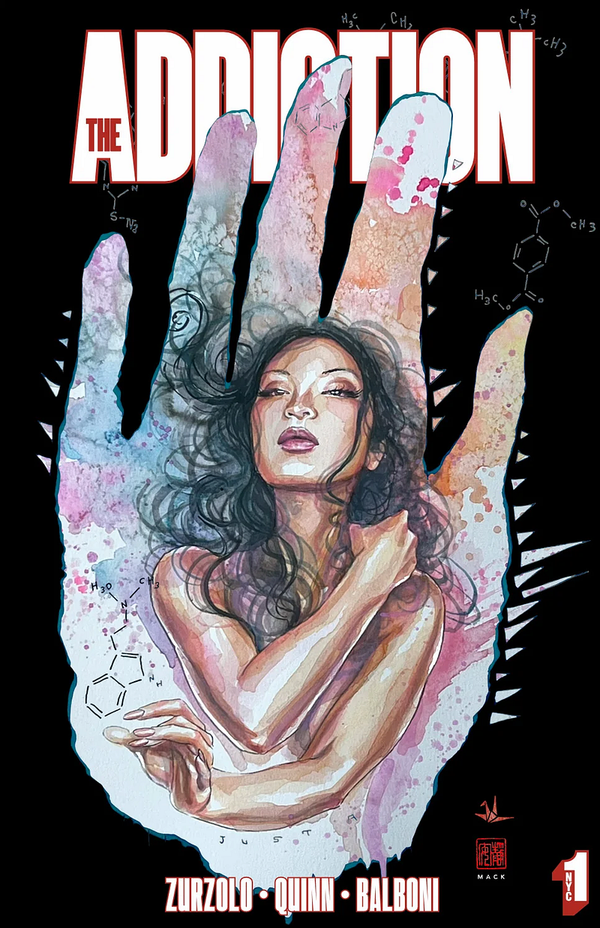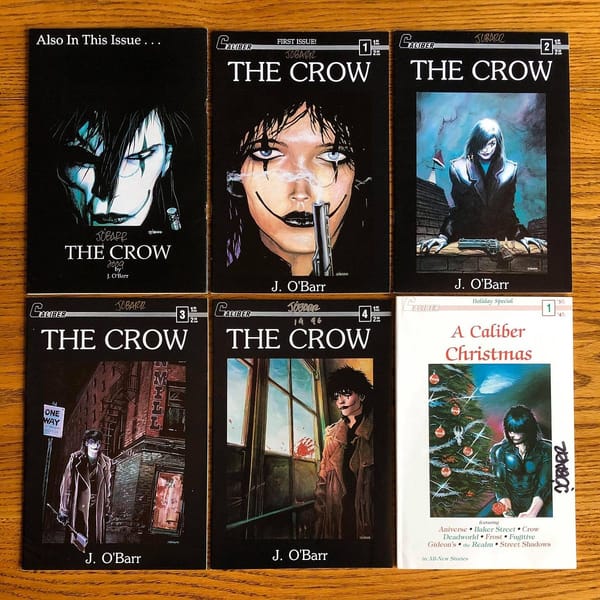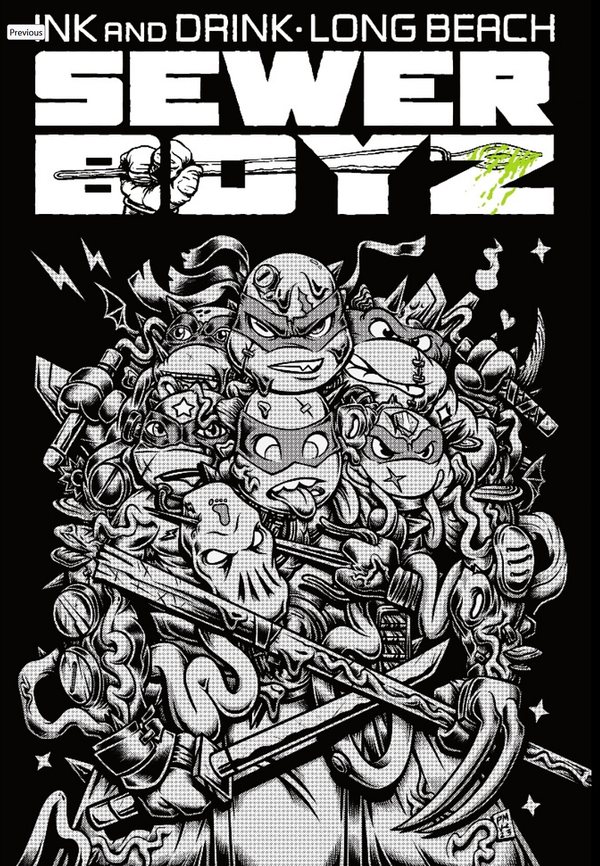Obsessively Collecting James O’Barr’s Work — Sewer Mutant Podcast Episode 4
Welcome to Sewer Mutant, the podcast that takes you way underground to excavate comics you won’t find anywhere else. You’ve probably heard…
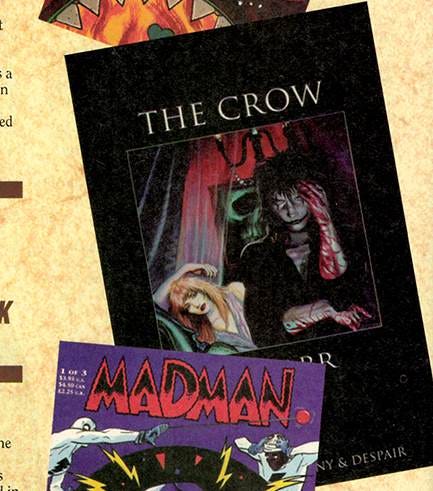
Welcome to Sewer Mutant, the podcast that takes you way underground to excavate comics you won’t find anywhere else. You’ve probably heard of The Crow, James O’Barr’s tale of revenge that became a film, TV show, and pop culture phenomenon. But O’Barr did a few lesser-known works that I’ve been obsessed with for years. For this episode, I’m joined by John Ekleberry, a longtime James O’Barr collector behind the old fansite Shattered in the Head and more recently the James O’Barr collector site to unpack our shared obsession with O’Barr’s work.
Subscribe to the podcast feed or find it on Spotify, Apple Podcasts, or your favorite podcast app.
- Music by Krudler
- James O’Barr Collector site
- Shattered in the Head
- My recent feature on O’Barr’s early years.
Show Notes:

John came to James O’Barr’s work through the film. A friend showed him the movie on VHS when he was around 14 and it just stuck with him. He was into comics but not really underground stuff. He mail-ordered a copy of the graphic novel from Kitchen Sink, and that drew him in even further.
The first thing I read him was “Frame 137” when I was around 11. Before that I remember seeing the Tundra article in Wizard # 12 which had the cover to the Tundra The Crow # 2 in it. I read “Frame 137” because all of the Image artists were always going on about Sin City and Dark Horse Presents # 61 was the only issue of that comic with a Sin City story I was able to get my hands on. I’d never seen anything like it. I also didn’t see The Crow film when it came out, got it on VHS at Walmart in 1995. Got the comic after that.
What really sticks with us: John says it’s because it’s about the universal themes of love and death. He came to the work when he was young enough for it to really become a part of him. “It tells the truth in a way only a great work of fiction can.” He also points to the underrated humorous elements. For example, in the first issue of the Caliber version, the next issue blurb says “Next issue: Nothing is explained and things get violent.” There was a willingness to leave things unexplained in the comic. “The book just drops you in and takes you for a ride.”
I point out that now The Crow is a known story format. But in 1989 it was pretty weird. Reviewers all basically said: “I love this but I don’t understand it.” O’Barr has mentioned that someone floated the idea of Michael Jackson playing Eric. A review from Amazing Heroes # 167 in 1989 said Eric looked like a combination of Michael Jackson and The Joker.
What sticks with me, even though I can see more flaws in the artwork and writing (for example, Eric proceeds without any real obstacles), it remains one of the most expressive comics works I’ve ever seen in terms of being able to capture pain, longing, and anger on the page. I can’t say it’s the only thing that does that but he has few peers in comics who are able to do that.

John says apparent lack of obstacles is an important aspect of the work to him. “He’s Biblical.” [Later, after the show John pointed out the only person who can hurt Eric physically is Eric himself. For example, after he cuts himself he has to bandage himself, but no one else seems able to harm him. All his challenges are internal. I think that’s a great point, though if Eric’s internal struggles ever presented a real obstacle in him completing his mission, we don’t see it as readers. I like to think of The Crow as more of a graphic poem than a graphic novel. Traditional plot and story conventions take a backseat to expressiveness.]

O’Barr’s work has grown a lot over the years. John says he’s become more of a fine artist now. Sadly, too little of his work has made it to print and he’s only done a limited number of sequential art pages, the bulk of which were published in 1989 and another big batch in 1992. “It’s easy to be a fan because there’s not that much to pick up,” John says.
Tracking down O’Barr’s scant non-Crow works was a big motivation for my creation of the Temple to Sadness website in the 90s. There were a ton of Crow websites, but there wasn’t much information about O’Barr or what comics he’d done. I came across a comic shop in Bozeman, MT in 1995 or 1996 that had a bunch of Caliber Presents, including # 2 with Gideon’s and # 3 with Io. So scanned some panels from Gideon’s and Frame 137 and put up an O’Barr fansite.
John had similar motivations for his 90s site Shattered in the Head: he put together a bibliography of O’Barr’s work, including covers and pin-ups, and wanted to put it out there, along with commentary on the various works. He never finished the site, which was hosted on Geocities.
He put the bibliography on Wikipedia, but hasn’t updated it since around 2012. There have been a few new things, mostly covers, since then.

We then transition over to talking about O’Barr’s various post-Crow projects that were never completed, starting with “Inertia’s Kiss,” a story announced as part of 12 Gauge Studio’s series The Ride. The only thing that was ever published was a sketchbook, I think only ever sold at conventions. In the introduction to the sketchbook O’Barr explains that he used the same character from “Slave Cylinder,” a post-Crow cyberpunk comedy comic O’Barr drew that appeared in the Bonesaw anthology from Tundra and later in the O’Barr compilation comic Pink Dust. But while “Slave Cylinder” took place in the future, “Inertia’s Kiss” appeared to take place in the present or perhaps the recent past.
“Inertia’s Kiss” also has at least some superficial similarities to “Engines of Despair” or “The Bride Crow,” which started as a pitch for a Crow movie sequel and was to feature a couple murdered on the wedding night coming back to avenge themselves. O’Barr still mentions it as a work in progress in interviews.

Sundown was a gothic western that appeared at one point as a motion comic for the iPad, but it’s no longer available. He still talks about it in interviews as a work in progress. The YouTube trailer is about the only thing you can still find of it.
Gothik was another project O’Barr worked on in the 90s, and two parts of it were published “Frame 137” (my favorite non-Crow O’Barr work) and “Snake Dance” (John’s favorite non-Crow O’Barr work) But he decided not to finish it because he was frustrated by trying to get a moving target in terms of technological development. John points out, though, that we all still love Blade Runner even though the technology is outdated.

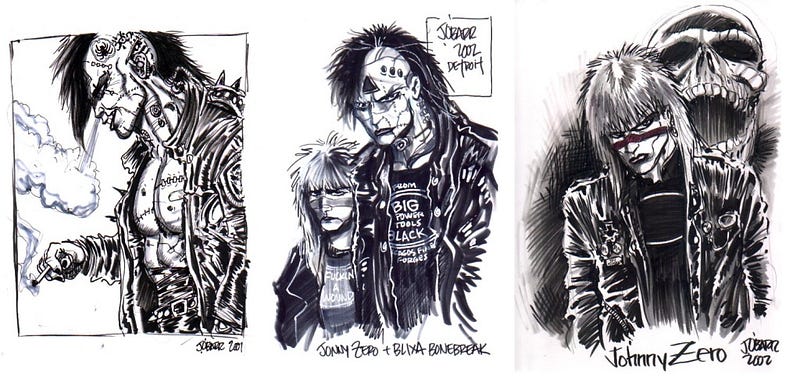
Gothik was to be a double-feature with John Bergin’s Golgothika, which eventually appeared from Caliber in the late 90s but unfortunately was canceled before it was completed. Bergin has been working on finishing the final issue and will likely release it as a complete graphic novel when it’s done. His graphic novel Wednesday takes place in the same universe. Be sure to check out Bergin’s Instagram account for lots of great stuff.
After recording the interview we learned that there was actually a Gothik sketchbook that included art and script excerpts. A new white wale for both John and me.
One of my other white wales is to discover a comic that John doesn’t know about and add it to the bibliography. I feel like there has to at least be some fanzine work out there.
John says his favorite non-Crow O’Barr work is “Snake Dance.” Mine is “Frame 137.”
John decided to start the new O’Barr Collector’s website to finish his work writing up O’Barr’s work, but decided not to go back to the Geocities format. His next article will probably cover the Tundra period.
Around the time he did his Tundra work, O’Barr did a story called “Zeitgeist” for Northstar, first published in Slash # 2 in 1992. He was talking about finishing it as recently as 1999 or 2000.
O’Barr’s biggest recent work, besides covers, were two Crow sequel comics: Skinning Wolves and Curare in 2012 and 2013 respectively. O’Barr wrote both and did the breakdowns for Skinny Wolves.
Kyle Hotz, who did a lot of different Crow covers over the years, is one of the more active artists from the Outlaw Comics generation. John recommends his Sirius series Mosaic to O’Barr fans.
John doesn’t read a lot of contemporary comics, but he picked up Ed Piskor’s Red Room and X-Men: Grand Design.
Gideon Falls, which O’Barr did a cover for, is more similar to 90s Vertigo comics than O’Barr, but I liked it and think other O’Barrs would too.

Also, Nick Bunch’s Bloodhorn, originally serialized in Reptile House brings a lot of the punk/counter-culture vibe of “Frame 137” and The Crow, though it’s done in a more cartoony/underground comix style. I interviewed Nick and Reptile House co-conspirator Mechanicalpencilgirl in the second episode of this podcast.
Outside of comics, I recommend the film Mandy, which actually kind of looks like an O’Barr painting.
John also recommends the tv show Yellowjackets, which pulls in a lot of the elements of horror and surrealism of underground comics.
[One thing I forgot to mention during the podcast is Dorohedoro, both the anime and comic (this is the second time I’ve forgotten to mention a Q Hayashida work during the podcast: I also forgot to mention Dark Dai as a favorite comic of 2021 during my conversation with Eddie Raymond).]
For those looking to explore O’Barr’s non-Crow output, John recommends six comics that include the majority of his non-Crow sequential output:
- Caliber Presents # 2, featuring “Gideon’s.”
- Monster Massacre Special, featuring “Snake Dance.”
- Northstar Presents James O’Barr which features “Zeitgeist” and “Blood Rape of the Lust Ghouls.”
- Tasty Bits which includes “Frame 137,” “Shadows,” and a strip he drew in high school.
- The remastered Io that John Bergin published.
- Pink Dust which features “Slave Cylinder” along with pin-ups and poetry.
The only thing I’d add to the list is the Andrew Vachss Hard Looks trade paperback, which features “Anytime I Want” and “Joy Ride.” They aren’t written by O’Barr, but I recommend them over the Northstar book because I think they play more to his strengths. John says he actually does like the Northstar book and points out that it has more total O’Barr pages than the Vachss book, and also recommends making sure you get the second edition of the Hard Looks TPB, which features both O’Barr strips as some editions only contain one or neither strip. It might be easier just to pick up the individual issues.
The late Vachss — to whom “Frame 137” was dedicated — wrote a Crow prose story in the hardcover version of Shattered Lives and Broken Dreams that does not appear in the softcover version.
I recommend Vachss’s book, particularly the Burke series (start with the second one, Strega) and his absolutely devastating A Bomb Built in Hell to O’Barr fans.
John closes out the interview by thanking his old friend Kelsey for introducing him to The Crow.
